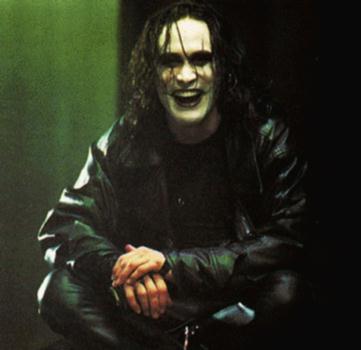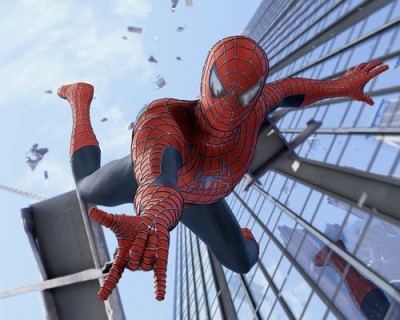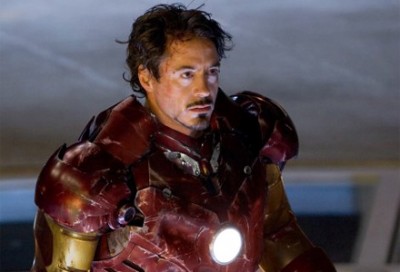Since the box office explosion of Tim Burton’s Batman feature adaptation in 1989, the major Hollywood movie studios have attempted to exploit the comic book / graphic novel in feature adaptations of hordes of previously dormant franchises. In the past twenty years, there have been many such films and sequels, not to mention many other films which have tried to copy the métier of these films with the hope of kickstarting a new franchise for studios who increasingly rely on the synergy of their various divisions, be they publishing, broadcasting, print, amusement parks, and emerging digital technologies. The issue is that only a very few of these properties have proved worthy of their legacy, and even fewer have created the buzz that the modern incarnation of studios swear by to generate material across the many media that they govern.
In the 1990s, after three increasingly poor Batman sequels, comic book adaptations and copycats seemed to lose their way, especially in the age of independent successes and the verite storytelling. During this time, Alex Proyas’ The Crow best nailed the spirit of the comics, and Luc Besson’s original The Fifth Element provided a sideways homage to periodical books including Heavy Metal. Above all of these The Matrix captured the cyberpunk/comic zeitgeist more so than any film of the decade. Coming at the tail end of the 1990s, it fully outstripped the first prequel of the second Star Wars trilogy, released at the same time, by offering a slick combination of ideas, action, nouveau technology, noir settings, and heroic characters.
The first decade of the 21st century was nothing if not a crushing disappointment on many levels, and the comic book-based films were prominent in this failure to fulfill high expectations. A long rumored and awaited Spider-Man film by the unlikely Sam Raimi provided the best of all of these films, but a quickly made first sequel offered nothing new whatsoever in the best example ever of a completely safe rehash of everything that worked the first time out. A second sequel was even more pointless, coming at a time when two meaningless additions to the fray arrived in the form of two Hulk films, each with its strengths, though the studio machinations would have us believe that the second film was a complete improvement over the first in every way. It wasn’t. The second tier of these films were punched out in the 2000s, including forgettable fare such as Daredevil and its brethren Elektra, a miscreant Catwoman film, and a slew of middling films based on the X-Men franchise that were more about the agendas of the filmmakers than the resurrection of a classic property. Everything that was needed to say about X-Men was said in the first film, but that didn’t stop three more films from coming through the studio pipeline.
Reboots of the Batman and Superman franchises were curious at best as each tried to distance itself from the previous projects in its namesake, what with decreasing interest and canyons of quality reduction in four previous films in each franchise. The first Batman of the decade was a total rethink that relied on good writing but was made by a director with no feel for action. At his best with cerebral material such as the brilliant Memento, director Christopher Nolan was lost in the world of superreal comic action scenes, but its success prompted a sequel with was abuzz with the performance of Heath Ledger as the Joker before the film’s release. On the basis of the posthumous nature of Ledger’s performance, The Dark Knight was one of the highest-grossing domestic releases ever and made up for miscasting of the youthful Christian Bale as the supposedly middle-aged Dark Knight character and Nolan’s repeated indifference to high-octane moments. Worse can be said for Bryan (X-Men) Singer’s Superman Returns, also arriving in the later part of the last decade as in Nolan’s first Batman. Singer’s film suffered from terribly misguided casting all around, but, more harmfully, went on to commit the cardinal sin in a comic book movie: unthinkably, he made Superman boring. Predictably, Singer wasn’t asked to return to the franchise.
Iron Man had more promise. With the perfect casting of Robert Downey, Jr. in the title role, the origins story, much like Raimi’s initial Spider-Man film, left little to the imagination but was smartly written and crisply directed by one-time indie actor Jon Favreau. A combination of high-tech pyrotechnics and intricate character study, 2008’s Iron Man was the first film since 2002’s Spider-Man to fully capture the spirit of the comic and create a fan-friendly new film for audiences only intermittently familiar with the original property.
But, of course, a sequel was inevitable. Coming only two years hence, the new film aimed to please the fans of the first film, bringing back all of the key team members of that initial work but adding to the festivities with a new villain, much like many others of its like, the Spider-Man and Batman films being a useful model. However, much like the Spider-Man films alone, the filmmakers here played it extra carefully. Favreau and Downey were predictably easy recruits, with newly re-discovered actor’s actor Mickey Rourke being brought in for antagonistic duties. All of the elements were perfectly positioned, and early box office news has surely satisfied the producers and studio that the right moves were made.
The only trouble is that Iron Man 2 represents nearly all that has gone wrong with studio filmmaking on this level in the past two decades. Primarily that this film has no discernible point or purpose whatever. Certainly, Downey makes for an admirable hero and the supporting cast in the way of Don Cheadle, Scarlett Johansson, Gwyneth Paltrow do not disappoint. Rourke is superb in his limited role; unfortunately, he only has about 25 lines of dialogue through the whole film and can only do so much giving silent facial looks with his scarred features. But the filmmakers are clearly scratching and clawing for things to give Iron Man to do and have come up way short.
In this new film, we get the requisite snappy character moments, and interpersonal scenes much like in Spider-Man 2. But like that film, major scenes are contrived so as to be little more than MORE material with nothing new or interesting. Favreau relies on major set pieces to let Iron Man do his work. One of the first is at a speedway in Monaco. Why this setting has been chosen is anyone’s guess. Ostensibly, it was to give Downey Jr. a chance to drive a cool fast car. Suddenly, Mickey Rourke’s character appears on the track, again likely appearing in the scene merely to make use of his double whips. Watching his electronic whips crack through the scene like a Hugo-esque knoughter of the future conjured little more than images of the evil whip warriors from Michael Jackson’s Captain EO. And much like Spider-Man 2, which cast the formidable Alfred Molina as Doc Ock, Rourke is ultimately wasted in this film with very little to do, especially compared to the stealing of Dark Knight film by the Joker.
Midway through the film, a battle of two “iron men” in the way of Downey Jr. and Cheadle has no reason for being other than to see two metallic titans throw each other around a concrete enclosure. Too bad that Terminator 2 executed that exact scene more fluidly and memorably in both a shopping mall corridor and in the bowels of an industrial complex.
A welcome addition to the series, Johansson gets to let her tousled hair down and kick ass in one scene in a slinky black suit that conjures memories of Michelle Pfeiffer in Batman Returns crossed with Shannon Elizabeth in Jay and Silent Bob Strike Back. But rather than let Johansson’s best moment play, Favreau chooses instead to intercut it with a scene of himself going Mike Tyson on a security guard. Is there any rational explanation of this? Comic relief? Ego? Vanity? A director bored with his rote chores in a useless sequel?
The last of the major set pieces occurs in Flushing Meadow, Queens, New York, where the filmmakers have conjured the imagery of the 1964 World’s Fair on that site, yet with a 21st century makeover. We strangely return to this setting much later in the film for no clear reason. Favreau’s untethered camera glides all over this colorful emptiness without any obvious purpose. In an ultimate battle scene with Downey Jr. and Cheadle, the latter double-armed with machine guns that conjured the APUs in Matrix: Revolutions, up against masses of robotic drone iron men, one couldn’t help remembering that this entire idea was done much better and in greater degree in the dock scene in that third Matrix film, the clear standout sequence in that other sequel which gave us more movie but enhanced nothing in the Matrix franchise.
Especially since the stakes have been raised in a Hollywood system that is terrified of boring its core audience, i.e. 18-34-year-olds, there seems to be the modus operandi, that in a major release, bigger, faster and more equals better. If you throw more costly CG effects and other production elements at a property, it will do its work. Yet, if there is one thing that Iron Man 2 teaches, is that bigger can be true, so can faster, and certainly more is in play, but the sum total of these elements in a sequel to a film that worked its first time out is that “worse” is the operative word here. However, memo to such powers-that-be: as evidenced by the most recent top grossing film of all-time, bigger can work, so can faster, but “original” and “new” should also be strongly considered in favor of “more.”
Note: for all diehard fans, stay through to the bitter end of the film and you will be (ahem) pleasantly surprised that more is certainly on the way.
Scott Essman is a freelance PR Exec who does work around LA for clients like Universal Studios. He’s currently working on a book about the life and films of Tim Burton.
EM Feature
By Scott Essman
Posted 05.16.2010



